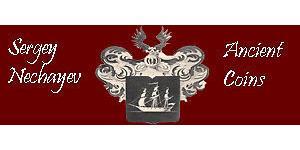1 Stater
[ 5345] BOEOTIA: THEBES - Silver Stater (21mm, 12.06 gm.) Thebes: 368-364 B.C. Reference: BCD Boiotia 539; SNG Copenhagen 339. Boeotian shield. Amphora; KA-BI across field; all within incuse concave circle. This federal issue were formerly attributed to the period following the great Theban defeat by Philip of Macedon in 338 B.C. Provided with certificate of authenticity. CERTIFIED AUTHENTIC by Sergey Nechayev, PhD - Numismatic Expert Thebes (Θῆβαι) was a Boeotian city-state (polis), situated to the north of the Cithaeron range, which divides Boeotia from Attica, and on the southern edge of the Boeotian plain. It played an important role in the fabric of Greek myth, as the site of the stories of Cadmus, Oedipus, Dionysus and others. It was the largest city of the region of Boeotia and was the leader of the Boeotian confederacy. It was a major rival of Athens, and sided with the Persians during the 480 BC invasion of Xerxes. Theban forces ended the power of Sparta at the battle of Leuctra in 371 BC under the command of Epaminondas. The Sacred Band of Thebes (an elite military unit) famously fell at the battle of Chaeronea in 338 BC against Philip II and Alexander the Great. In the Mycenaean period it attracted attention from the invading Dorians, and the fact of their eventual conquest of Thebes lie behind the stories of the successive legendary attacks on that city. The central position and military security of the city naturally tended to raise it to a commanding position among the Boeotians, and from early days its inhabitants endeavoured to establish a complete supremacy over their kinsmen in the outlying towns. Classical period Map of the Topography of Ancient Thebes. In the late 6th century BC, the Thebans were brought for the first time into hostile contact with the Athenians, who helped the small village of Plataea to maintain its independence against them, and in 506 BC repelled an inroad into Attica. The aversion to Athens best serves to explain the apparently unpatriotic attitude which Thebes displayed during the Persian invasion of Greece (480–479 BC). Though a contingent of 400 was sent to Thermopylae and remained there with Leonidas until just before the last stand when they surrendered to the Persians, the governing aristocracy soon after joined King Xerxes I of Persia with great readiness and fought zealously on his behalf at the Battle of Plataea in 479 BC. The victorious Greeks subsequently punished Thebes by depriving it of the presidency of the Boeotian League and an attempt by the Spartans to expel it from the Delphic amphictyony was only frustrated by the intercession of Athens. In 457 BC Sparta, needing a counterpoise against Athens in central Greece, reversed her policy and reinstated Thebes as the dominant power in Boeotia. The great citadel of Cadmea served this purpose well by holding out as a base of resistance when the Athenians overran and occupied the rest of the country (457–447 BC). In the Peloponnesian War the Thebans, embittered by the support which Athens gave to the smaller Boeotian towns, and especially to Plataea, which they vainly attempted to reduce in 431 BC, were firm allies of Sparta, which in turn helped them to besiege Plataea and allowed them to destroy the town after its capture in 427 BC. In 424 BC at the head of the Boeotian levy they inflicted a severe defeat upon an invading force of Athenians at the Battle of Delium, and for the first time displayed the effects of that firm military organization which eventually raised them to predominant power in Greece. After the downfall of Athens at the end of the Peloponnesian War, the Thebans, having learned that Sparta intended to protect the states which they desired to annex, broke off the alliance. In 404 BC they had urged the complete destruction of Athens, yet in 403 BC they secretly supported the restoration of its democracy in order to find in it a counterpoise against Sparta. A few years later, influenced p ...
更多
您也许会对以下钱币感兴趣
2024-04-26
- Historical Coin Prices
2024-04-26
- New coin is added to 1000 Reis 葡萄牙王國 (1139 - 1910) 銀 卡洛斯一世 (葡萄牙)
1000 Reis 葡萄牙王國 (1139 - 1910) 銀 卡洛斯一世 (葡萄牙)
本组有 12 钱币 / 10 售价
⇑
1898, Portugal, Carlos I. Silver 1000 Reis "Discovery of India Anniversary" Coin. 4th Centennary of the Discovery of India Commemorative! Mint Year: 1898 Reference: KM-539. Denomination: 10 ...





 English
English





-300-150-BZEKbzbifdQAAAFLyHbk0KRF.jpg)






